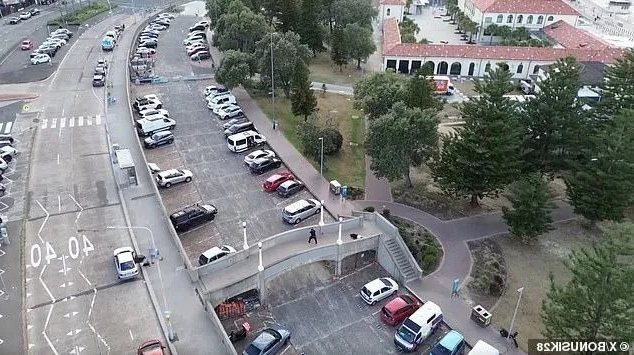Deadly Shooting Shatters Festival-Feier

Am Sonntagabend umBogenschützenparkin Bondi Beach,Australien, die fröhliche Atmosphäre des MeeresChanukkaDas Festival wurde durch Schüsse zerstört. Hunderte Menschen hatten sich versammelt, um den ersten Tag des jüdischen Lichterfestes zu feiern.
Plötzlich eröffneten zwei schwer bewaffnete Männer – der 24-jährige Naveed und sein 50-jähriger Vater Sajid – von einer Fußgängerüberführung aus mit militärischen Waffen das Feuer.
In Australien kommt es selten zu groß angelegten Schießereien, was diesen Vorfall zum tödlichsten seit dem machtMassaker von Port Arthurim Jahr 1996.
Bisher sind 16 Menschen gestorben, darunter einer der Schützen. Weitere 42 wurden mit verschiedenen Verletzungen ins Krankenhaus eingeliefert. Von den Opfern starben 14 noch am Unfallort und ein zehnjähriges Kind verstarb später im Krankenhaus.

Ahmads mutiges Eingreifen
Ohne den Mut von Herrn Ahmad hätten die Verluste weitaus höher ausfallen können.

Ahmad, 43, Vater von zwei Kindern, ging mit seinem Cousin lässig im Park spazieren, als die Schießerei begann. Eine Einladung zur Festparade hatten sie abgelehnt. Im Nachhinein betrachtet hätte es ihnen möglicherweise das Leben gerettet, der Menschenmenge auszuweichen.
Da sie Hunger verspürten, gingen die beiden in ein nahegelegenes Café, um Kaffee zu trinken. Innerhalb von zehn Minuten kam es zu Schüssen. Ahmad entdeckte Sajid, einen der Schützen, nicht weit vor ihm und traf eine lebensverändernde Entscheidung.
Konfrontation mit dem Schützen
Laut Angaben seines Cousins sagte Ahmad zu ihm: „Ich könnte sterben. Sag meiner Familie, dass ich gehandelt habe, um andere zu retten.“
Ahmad näherte sich dann vorsichtig dem Schützen, der sich hinter einer Palme versteckte und auf die Menge zielte. In einer plötzlichen Bewegung sprang Ahmad hinter einem Auto hervor und attackierte Sajid.
Während des Kampfes gelang es ihm, dem Schützen die Waffe zu entreißen und ihn zu Boden zu stoßen. Dann richtete Ahmad die Waffe auf Sajid und zwang ihn, zurück zur Brücke zu kriechen.
Zu diesem Zeitpunkt wurde Ahmad klar, dass er ins Bein geschossen worden war.
Das Chaos kontrollieren

Dann hob Ahmad eine Hand und signalisierte der Polizei, dass er nicht zu den Angreifern gehörte. Währenddessen schoss Naveed, der andere Schütze, weiter von der Brücke aus.
Schließlich griff die Polizei ein und kontrollierte den Tatort. Sowohl Vater als auch Sohn waren handlungsunfähig, einer starb, der andere wurde verletzt und wurden dann von den Strafverfolgungsbehörden festgenommen.
Ahmad verletzt, aber online gefeiert

Während der Auseinandersetzung wurde Ahmad mehrfach angeschossen. Die Berichte variieren und berichten von zwei oder bis zu fünf Schusswunden. Trotz seiner Verletzungen verbreitete sich sein Heldentum schnell im Internet.
Videos von Ahmad, wie er den Schützen überwältigt, verbreiteten sich weithin und lösten eine Crowdfunding-Kampagne ausGoFundMe. Innerhalb eines Tages erreichten die Spenden von über 23.000 Spendern fast 1,4 Millionen US-Dollar, darunter 100.000 US-Dollar vom US-Milliardär Bill Ackman.
Lob der Gemeinschaft und der Regierung
Ahmads Familie war zwar besorgt, drückte aber auch großen Stolz aus. Berichten zufolge weinte seine Mutter, als sie erfuhr, dass ihr Sohn unzählige Leben gerettet hatte.
DerPremierminister von Australiendankte Ahmad öffentlich und sagte:
„Heute haben wir gesehen, wie Australier sich in die Gefahr stürzten, um anderen zu helfen. Diese Australier sind Helden. Ihr Mut hat viele Leben gerettet.“
Trauer und Genesung

Am darauffolgenden Montag versammelten sich Trauernde am Bondi Beach, hinterließen Blumen und zollten den Opfern ihren Respekt. Einige weinten, während andere einander trösteten.
Die gute Nachricht ist, dass Ahmad sich stabilisiert hat. Er bleibt im Krankenhaus und erhielt Besuch vonChris erinnert sich, DiePremierminister von New South Wales.
Ahmads Mut hat ihm weltweite Bewunderung eingebracht. Seine Genesung ist nun die Hoffnung vieler, die seine Heldentat miterlebt haben.



















